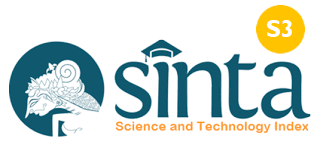Mingkatkan Kemampuan Guru Produktif Membuat Rencana Pelaksanan Pembelajaran (RPP) Melalui Supervisi Klinis Di SMK Negeri 1 Bebandem Tahun 2019/ 2020
Keywords:
Productive teacher ability, lesson plan (RPP), clinical supervision.Abstract
The reality in the field is that it is found that many teachers have not made a Learning Implementation Plan (RPP) in accordance with the Permendikbud, this is because, among others: (1) The teacher does not completely understand how to compile the RRP, as a result of the lack of information they get, (2) the teacher not able to describe the syllabus into the main lesson plans in preparing learning activities, (3) Meanwhile, many teachers use ready-made lesson plans that are not suitable for school situations and conditions, (4) There is an assumption from the teacher that the lesson plan (RPP) is a complement mere administration. This is evident from the results of preliminary observations with teachers regarding the preparation of lesson plans, it turns out that the results are quite low, namely Productive Teachers in the TBSM Expertise Competency score 54, in the TAV Skills Competency the score is 48, in the AP Expertise Competency the score is 59 and in the TB Skills Competency the score is 61. Objectives This study is to determine whether clinical supervision can improve the ability of productive teachers at SMKN 1 Bebandem to make Learning Implementation Plans. The method used to collect data follows the steps used in clinical supervision, namely: interview, observation, question and answer, discussion and document study. The data analysis method used to analyze the data is descriptive analysis, both qualitative and quantitative. Based on the results of research that has been carried out for two cycles of productive teachers at SMK Negeri 1 Bebandem, it shows that there is an increase in the ability to compile a Learning Implementation Plan (RPP) through a clinical supervision approach. Based on the assessments obtained in cycle I and cycle II using the clinical supervision approach, the implementation of the actions taken can be said to be able to improve the ability of productive teachers at SMK Negeri 1 Bebandem in compiling a Learning Implementation Plan (RPP). The conclusion from this study is that the clinical supervision approach can improve the ability of productive teachers at SMK Negeri 1 Bebandem in compiling a Learning Implementation Plan (RPP). This is evident from the increase in the ability of Productive teachers in the TBSM Skills Competency from an initial value of 54 to increase to 84 in cycle I and to 96 in cycle II. Productive teachers in the TAV Skills Competency from the initial acquisition of 48 increased to 75 in cycle I and increased to 93 in cycle II. Whereas Productive teachers in the AP Skills Competency from the initial acquisition of 59 rose to 81 in cycle I and rose to 95 in cycle II, and for Productive teachers in the Catering Skills Competency from the initial acquisition of 61 in cycle I and up to 95 in cycle II.
References
Arikunto, S. (2004). Dasar-Dasar Supervisi. Jakarta: PT. Rineka Cipta.
Depdiknas. (2007). Standar Penilaian Pendidikan. Jakarta: Direktorat Pendidikan Menengah Umum.
Depdiknas. (2007). Standar Proses Untuk Satuan Pendidikan Dasar Dan Menengah. Jakarta: Direktorat Pendidikan Menengah Umum.
Hadi, S. (2004). Metodologi Research. Yogyakarta: Andi Offset.
Mendra, K. (2008). Meningkatkan Komitmen Dan Kemampuan Guru-Guru SMA Negeri 2 Busungbiu Menyusun Rencana Pelaksanaan Pembelajaran (RPP) Inovatif Melalui Kerja Praktek Dengan Teknik Umpan Balik. Penelitian Tindakan Sekolah. Denpasar: LPMP Depdiknas.
Modern Educators and Lexicographer. Webster’s New American Dictionary. Broadway Books Inc, New York.
Nuraga, P. (2008). Supervisi Klinis Sebagai Upaya Untuk Meningkatkan Kemampuan Kepala Sekolah Membuat Perencanaan Program Manajemen Berbasis Sekolah (MBS) Pada SMP Negeri 1, 2, 3, Dan 4 Kecamatan Banjar Kabupaten Buleleng Provinsi Bali. Penelitian Tindakan Sekolah. Singaraja: LPMP Depdiknas.
Purwanto Ngalim. (2005). Administrasi dan Supervisi Pendidikan. Bandung: PT. Remaja Rosdakarya.
Pidarta, M. (1992). Pemikiran Tentang Supervisi Pendidikan. Jakarta: Bumi Aksara.
Riduwan. (2006). Belajar Mudah Penelitian Untuk Guru-Karyawan Dan Peneliti Pemula. Bandung: CV. Alfabeta.
Sahertian, Piet A. (2000). Konsep Dasar & Teknik Supervisi Pendidikan Dalam Rangka Pengembangan Sumber Daya Manusia. Jakarta: PT. Rineka Cipta.
Sugiyono. (2008). Metode Penelitian Pendidikan (Pendekatan Kuantitatif, Kualitatif, dan R &D). Bandung: CV. Alfabeta.
Sugiyono. (2006). Statistika Untuk Penelitian. Bandung: CV. Alfabeta.
Sutha, K. (2008). Upaya Meningkatkan Kemampuan Guru Dalam Menyusun Silabus dan Rencana Pelaksanaan Pembelajaran (RPP) Yang Utuh Dan Benar Melalui Diskusi Kelompok Terfokus Di SMP Muhammadiyah 2 Singaraja. Penelitian Tindakan Sekolah. Denpasar: LPMP Depdiknas.
Tim Prima Pena. Kamus Besar Bahasa Indonesia. Gitamedia Press.
Wojowasito. (2001). Kamus Umum Lengkap Inggris-Indonesia Indonesia-Inggris. Malang: Dalia Citra Grasindo.
Downloads
Published
How to Cite
Issue
Section
License
An author who publishes in the Cetta : Jurnal Ilmu Pendidikan agrees to the following terms:
- Author retains the copyright and grants the journal the right of first publication of the work simultaneously licensed under the Creative Commons Attribution-ShareAlike 4.0 License that allows others to share the work with an acknowledgement of the work's authorship and initial publication in this journal
- Author is able to enter into separate, additional contractual arrangements for the non-exclusive distribution of the journal's published version of the work (e.g., post it to an institutional repository or publish it in a book) with the acknowledgement of its initial publication in this journal.
- Author is permitted and encouraged to post his/her work online (e.g., in institutional repositories or on their website) prior to and during the submission process, as it can lead to productive exchanges, as well as earlier and greater citation of the published work (See The Effect of Open Access).
Read more about the Creative Commons Attribution-ShareAlike 4.0 Licence here: https://creativecommons.org/licenses/by-sa/4.0/.





